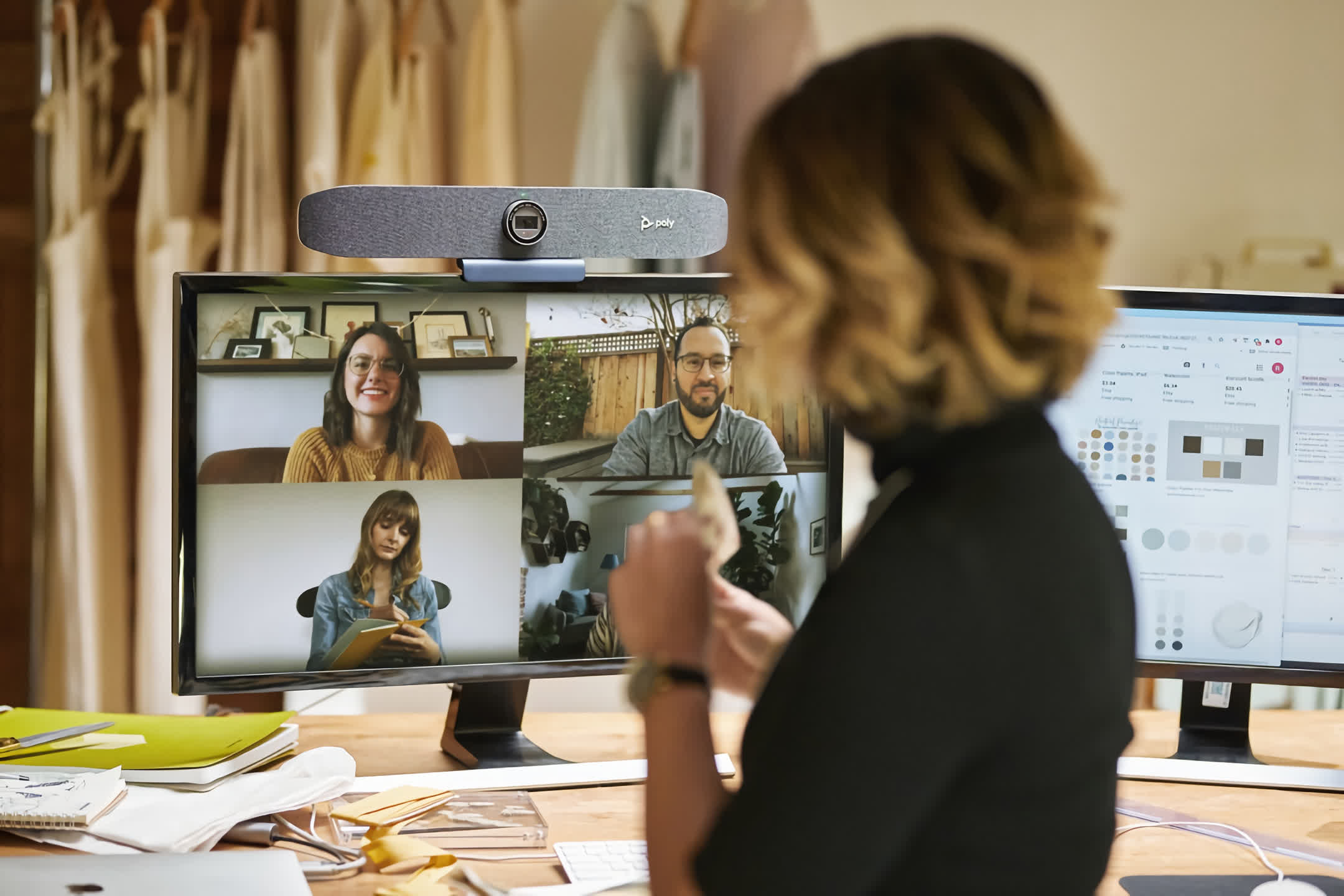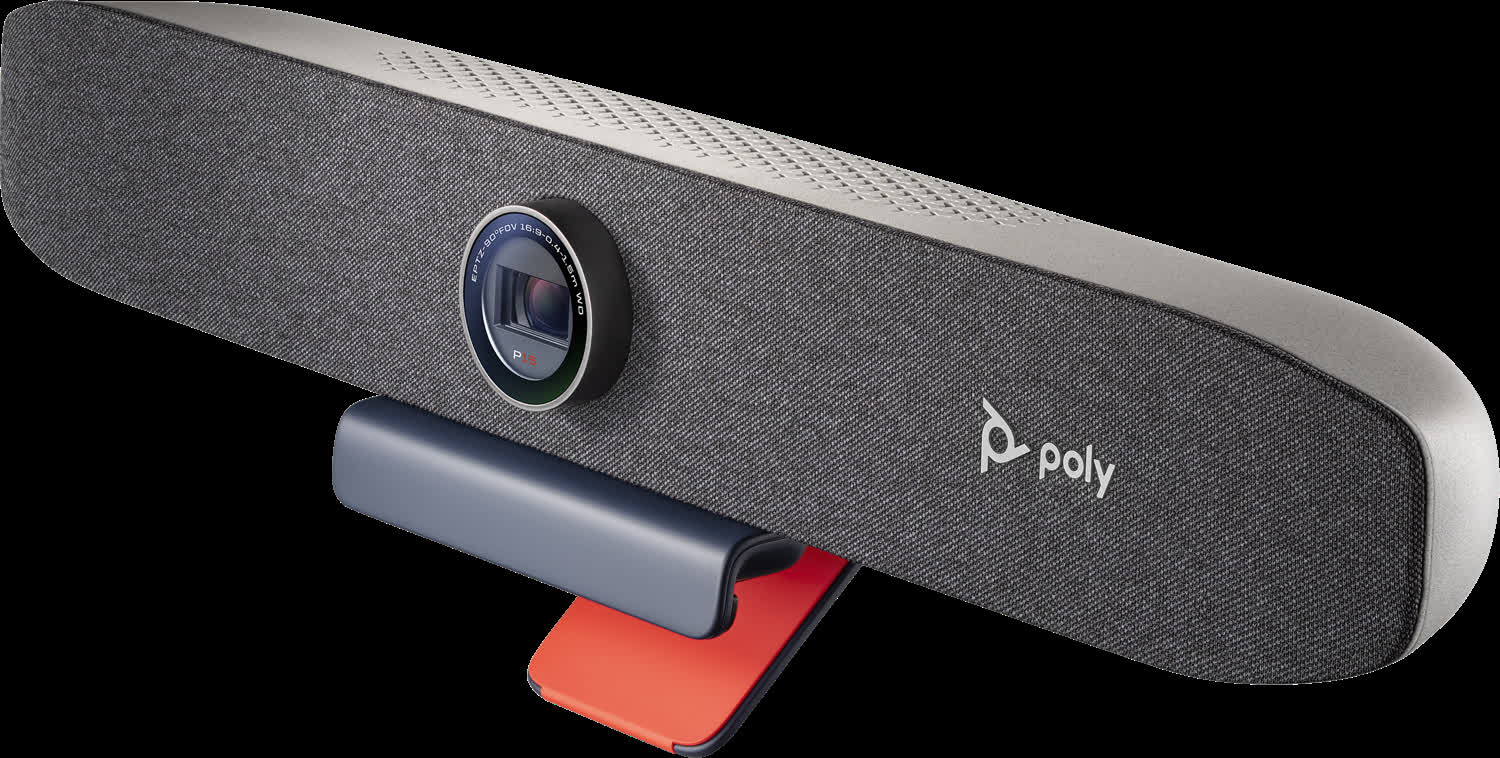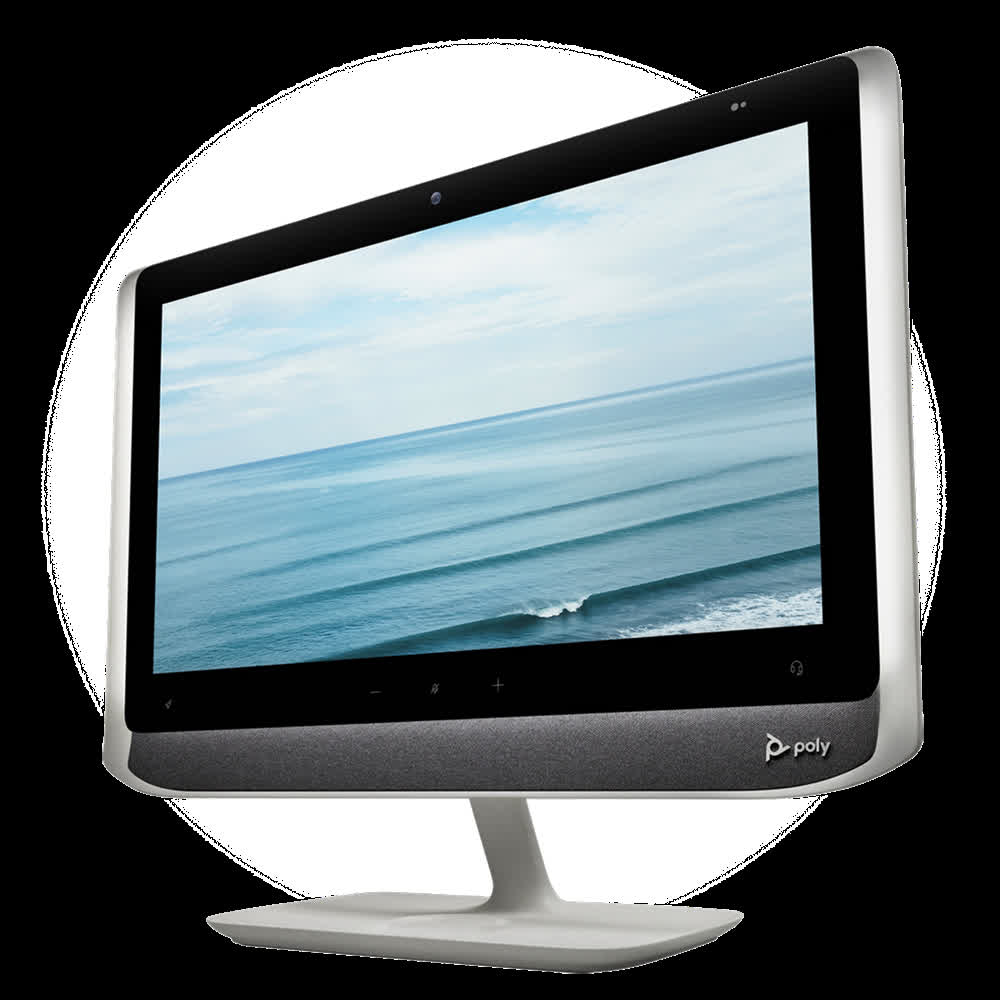
Given the massive amount of time that most of us spend on video calls these days, it’s not surprising to see more focus being placed on improving that experience. Until recently, most of the attention has been directed towards enhancements in software platforms, like Microsoft’s Teams, Zoom, Cisco’s Webex, and Google Meet. While those are certainly important, at the end of the day, what you really need to improve the quality of video calls is better hardware.
Poly, the company formed after the merger of Polycom and Plantronics, has unveiled a new line of personal videoconferencing-focused hardware with its new Studio P series of products.
The Poly Studio P5 is a standalone webcam with the unique capability of integrating a USB pass-through port on the back into which you can plug one of the company’s wireless headset dongles or other high-quality microphone.
The Poly Studio P15 is a personal video bar designed to sit on top of monitors that steps things up with a 4K camera, automatic camera framing, integrated speakers, and a multi mic array that incorporates the company’s NoiseBlock AI and Acoustic Fence technologies for muting unintended noises (like barking dogs, etc.)

Finally, the Studio P21 Conferencing Display is essentially a USB-attached 21” monitor that integrates a camera, speakers, and microphone into it (as well as wireless charging in its monitor base). It also includes lighting around the display bezel to improve the camera image quality in a variety of different environments.
What’s particularly interesting about these new products isn’t just the hardware capabilities, but the software and services that Poly is making available. In particular, the ability to remotely manage these PC peripherals via the Poly Lens cloud service, could be hugely attractive for companies that have been struggling to support work-from-home users’ video call-related issues.

Another new service called Poly+ offers a 24/7 help line that provides, appropriately enough, video-calling support—including through your smartphone, in case your webcam is down.
Finally, the Poly Lens App provides a simple way to configure or adjust settings on the products. One feature that could prove to be particularly interesting to many is called Soundscaping. Originally designed by Plantronics as a means to improve the audio environment in tightly packed, cube-filled or open office buildings, Soundscaping basically consists of piped in environmental sounds (such as a babbling brook, ocean waves, etc.).
The benefit is that it turns out, not only does a white noise-like audio background drown out the conversations of nearby co-workers, it actually helps people relax and focus. The original office-based version of Soundscaping accompanied the audio with video screens of streams and/or in-wall waterfalls, but for now, the Poly Lens App version only includes the audio. The ultimate goal, however—to help improve your focus while you’re working, while also drowning out nearby noise distractions—remains. Having had a demo of the very effective original version several years back, it will be interesting to see how well it works in this form.
In the early days of the pandemic, many people were content with the cameras built into laptops, but as time spent working at home has dragged on (and looks like it will continue to do so for at least several more months), there’s significantly more awareness of the varying quality in video conferencing hardware. In fact, I’m sure we’ve all been on calls where it’s easy to tell who has good cameras, microphones, and lighting—and who doesn’t.
Because of that, there are many more people who are interested in upgrading their video conferencing hardware so that they can make a better impression among co-workers, colleagues, and partners. In that context, it’s great to see Poly extend its reach from in-office room systems to more personal options.
Bob O’Donnell is the founder and chief analyst of TECHnalysis Research, LLC a technology consulting firm that provides strategic consulting and market research services to the technology industry and professional financial community. You can follow him on Twitter @bobodtech.
https://www.techspot.com/news/88511-poly-shows-off-high-res-webcams-video-conferencing.html